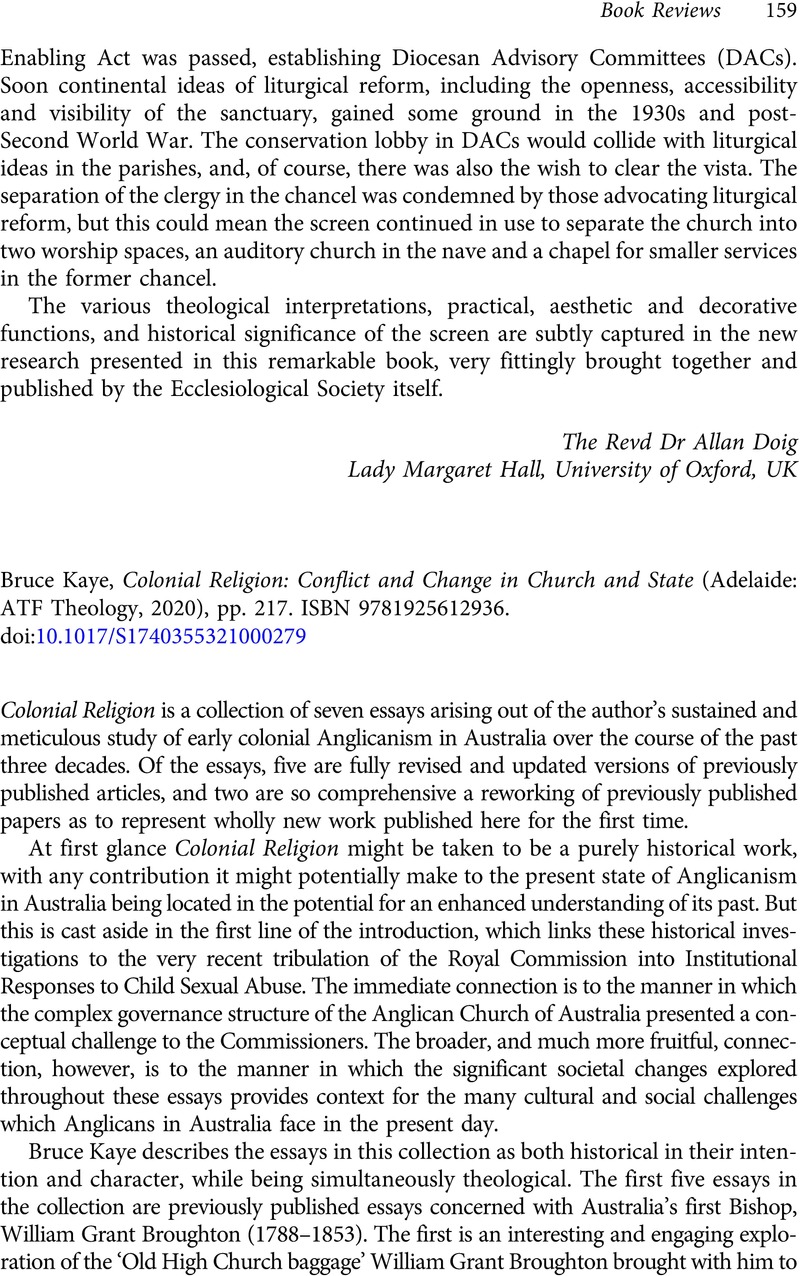No CrossRef data available.
Article contents
Bruce Kaye, Colonial Religion: Conflict and Change in Church and State (Adelaide: ATF Theology, 2020), pp. 217. ISBN 9781925612936.
Review products
Published online by Cambridge University Press: 12 January 2022
Abstract

- Type
- Book Review
- Information
- Copyright
- © The Author(s), 2022. Published by Cambridge University Press



